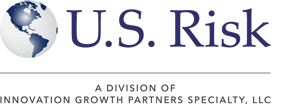Insights
 Mitigating Risks in the Retail Industry
Mitigating Risks in the Retail Industry
August 1, 2023
In the fast-paced world of retail, workplace hazards represent significant risks for business owners. Businesses have a duty to protect employees from risks. Unfortunately, workplace accidents happen every day.
To minimize downtime, protect temporary and full-time employees, and prevent property and inventory losses, risk management must work in concert with retail staffing insurance. In this article, we explore common workplace hazards, discuss methods to reduce or eliminate those hazards, and provide insights on why insurance coverage is critical.
Common Workplace Hazards
Working in retail involves various hazards and potential risks, many of which can lead to injuries if not properly managed. Some of the most common hazards in the retail industry include:
- Slips, Trips, and Falls: These can occur due to spills, cluttered walkways, uneven surfaces, loose mats, poorly maintained flooring, or improperly stacked merchandise.
- Manual Handling and Ergonomics: This can include lifting heavy items, repetitive movements, and prolonged standing, leading to strains, sprains, and chronic musculoskeletal issues.
- Violence and Aggression: Retail employees often face the risk of verbal or physical abuse from customers, especially during busy periods, sales, or disputes.
- Workplace Stress: High customer demands and long hours, especially during holidays and sales; lack of job control; understaffing; and workplace bullying can lead to stress and mental health problems.
- Cuts and Abrasions: These can result from handling items with sharp edges, using box cutters, or from broken or damaged merchandise.
- Falls from Height: This can occur when using ladders or stepstools to access high shelves or during stock handling and storage.
- Work Equipment: There are risks associated with the use of equipment such as pallet jacks, forklifts, compactors, and conveyor belts.
- Electrical Safety: Poorly maintained or misused electrical equipment can pose a risk of electrical shock.
- Fire Safety: Flammable materials, blocked emergency exits, faulty electrical equipment, or poor housekeeping can increase the risk of fires.
- Chemical Hazards: Some retail environments may involve exposure to cleaning chemicals, fuels, or other potentially harmful substances.
In our next section, we explore methods to mitigate these risks, helping to prevent the losses associated with employee injuries and property damage.
Mitigating Workplace Risks in Retail Operations
Managing workplace risks is a multi-step process that supplements the protections available through retail staffing and general liability insurance solutions.
Prioritizing mitigation of risks to employee health and safety is done by creating a top-down system, typically with the following components:
- Hazard Identification: The first step involves recognizing all potential hazards in the workplace. This involves workplace walkthroughs, collecting employee feedback, examining accident and incident reports, and consulting relevant safety literature and guidelines.
- Risk Assessment: Once hazards are identified, the next step is to assess the risks associated with them and the likelihood of these risks interfering with operations and the severity of the risks. Risk assessment should consider normal operating conditions as well as non-standard conditions (such as maintenance work, changes in procedure, etc.).
- Implementing Control Measures: Based on risk assessments, business owners must implement appropriate control measures to eliminate risks or minimize them if elimination is not possible. Controls can often be categorized using the “hierarchy of controls” from most to least effective: Elimination, Substitution, Engineering Controls, Administrative Controls, and Personal Protective Equipment (PPE).
- Training and Communication: All staff should be trained about hazards in their work environment and the correct safety procedures to mitigate them. Training must be ongoing and include all new employees, with “refresher” courses conducted on a regular basis for more senior employees. Communication about safety should be clear, consistent, and encouraged at all levels of the organization.
- Monitoring and Review: Regularly monitor and review the effectiveness of the control measures in place. This can be done through ongoing inspections, audits, consultation with employees, and reviewing incident and injury data. Adjustments should be made as necessary, especially when there are changes in the workplace (such as new equipment or procedures, after an incident, etc.). Shifting risks necessitates a proactive approach where new information is collected and shared, helping to reduce the potential for employee injuries.
- Emergency Preparedness: Prepare for emergencies by having clear emergency procedures and conducting regular drills. This includes procedures for fires, medical emergencies, incidents of violence, etc. Typically, this preparedness defines the roles each employee takes during an emergency and establishes points of contact, protocols for handling emergencies, and preparing response training programs.
- Documentation: All the steps and processes taken for workplace safety should be documented for accountability and reference purposes. This includes hazard identification results, risk assessments, control measures, training records, safety policies and procedures, inspection results, and incident investigations.
A safer working environment is the goal of implementing a hazard mitigation plan. Protecting a business’s most valuable assets—its employees—can also help reduce the costs associated with workplace incidents and losses of manpower, inventory, and insurance coverage.
Retail Staffing Insurance 101: Coverages and Protections
Employee recruitment and placement in the retail industry are often handled by staffing agencies or professional employer organizations (PEOs), particularly for seasonal, contract, and part-time employees. Staffing agencies face unique challenges, such as professional liability and administration of workers’ compensation programs.
Retail staffing insurance is comprised of numerous components, including:
- General and professional liability
- Employment practices liability
- Employee benefits liability
- Workers’ compensation
- Commercial property liability
- Fiduciary liability
- Errors and Omissions (E&O)
Each agency will have its own coverage needs; it takes the expertise of an experienced insurer to match coverage needs with available insurance solutions.
Smart business owners know that employee safety is the key to long-term success in the retail industry. By identifying and mitigating hazards, and by securing appropriate insurance coverages, retailers can continue to deliver valuable services while ensuring the safety and well-being of their employees, including those working in seasonal or part-time roles. ◼

